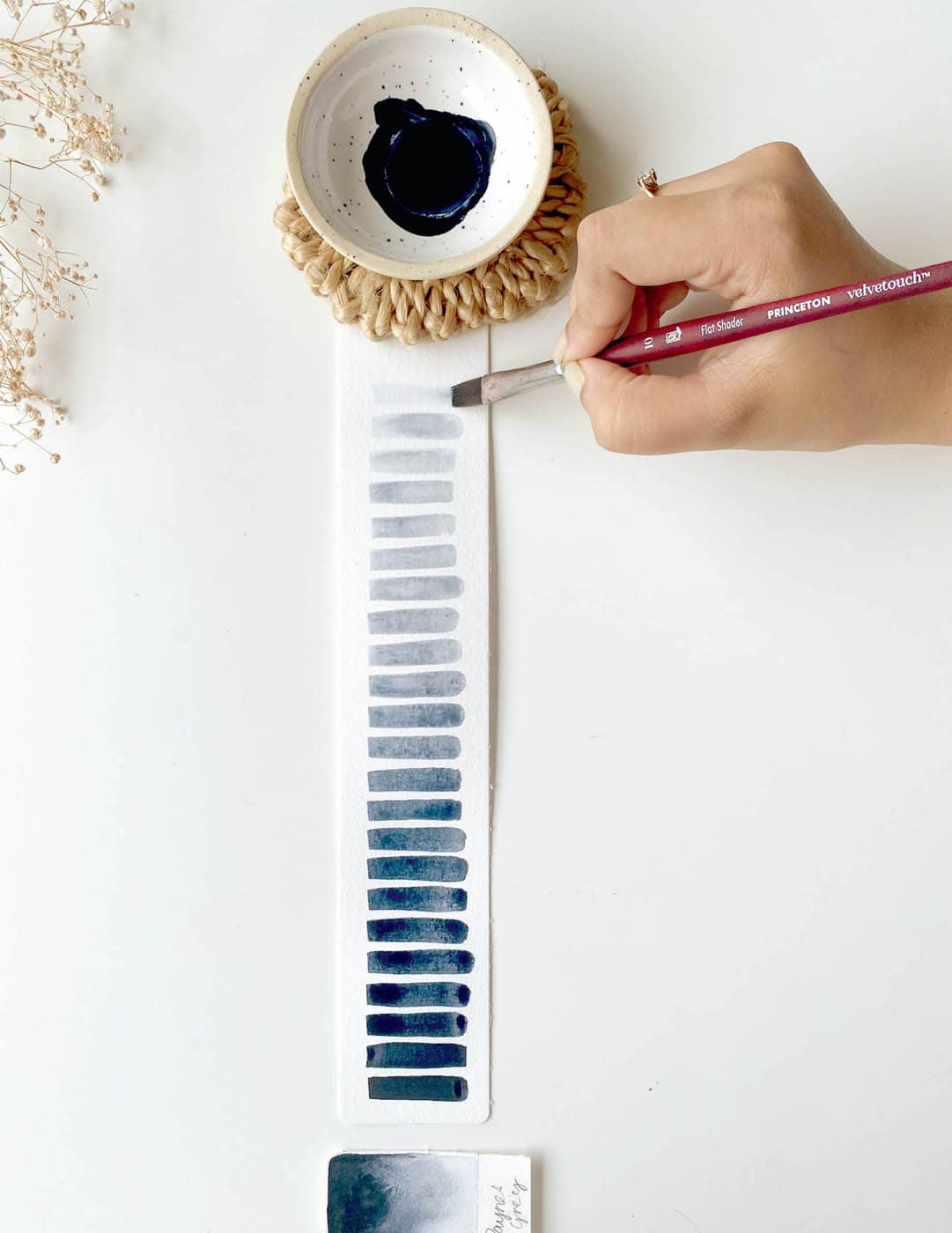Before We Begin
As you prepare to paint artwork featuring watercolor florals, it’s important to have not just the right tools on hand—you also need to know how to use them. This section explores how to prepare your paint, including how much water to use with your watercolors, and also provides an introduction to color values.

PREPARING THE PAINTS
Pans A spray bottle comes in handy to reactivate watercolors in a pan. Simply spray a couple of pumps onto the pans and let it sit for a minute or so before scooping up paint with a brush onto the palette. You can also drop one to two drops of water with a brush at the center of the pan for the same results.
Watercolor Tubes To reactivate dry, squeezed-out paints on your palette, follow the same directions as above.


VALUE SCALE
A value scale shows the degree of lightness and darkness in a color that can be achieved just by varying the amount of water. Before you start mixing colors, let’s observe how varying the amount of water alters the resulting color on the page. Here’s how to do it:
- 1. Start by creating a value scale with Payne’s gray. Wet a flat brush, pick up a generous amount of pigment, and add it to your palette. Using this paint, paint a vertical stroke with the flat brush. This first swatch demonstrates the full strength of Payne’s gray.
- 2. Next, lightly dip the brush in your jar of water, and as you pull the brush out of the jar, drag it across the side of the jar up to the edge to remove the excess water in the brush. Now, using the remaining water in the brush, add it to the pool of paint in the mixing palette, swirl the brush, and pick up the resulting mix to create another rectangle. It should be slightly lighter than the previous swatch.
- 3. Moving on, repeat the steps of lightly dipping the brush in water and removing any excess water. Introduce the water remaining in the brush into color, give it a swirl, and paint the next swatch.
- 4. Repeat the steps above until the brush water runs clear or the swatch is barely noticeable. By the end, you should have at least 10 different values if you’ve used Payne’s gray. (The number of values varies from pigment to pigment; for instance, a yellow won’t necessarily have 10 values like Payne’s gray.)

